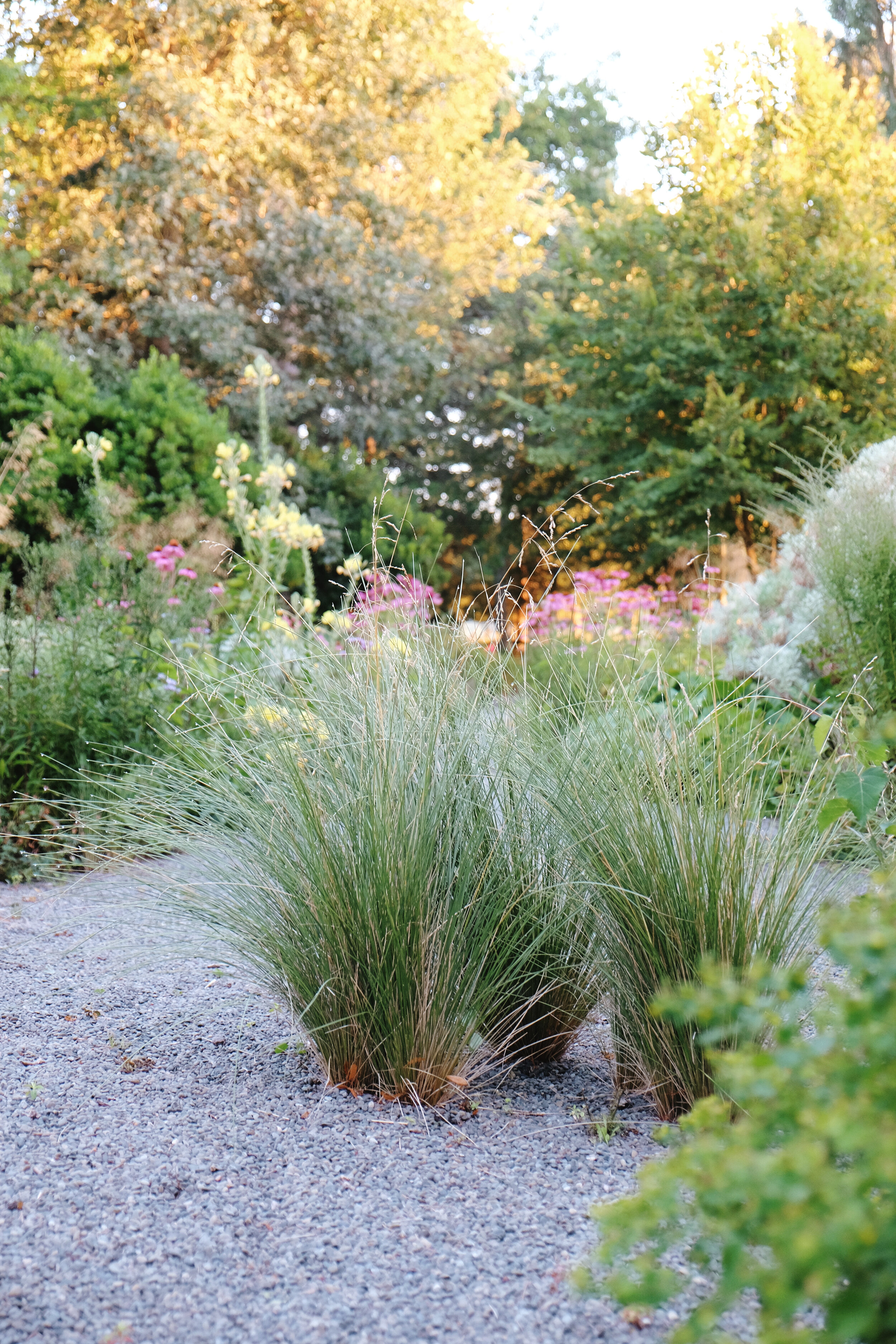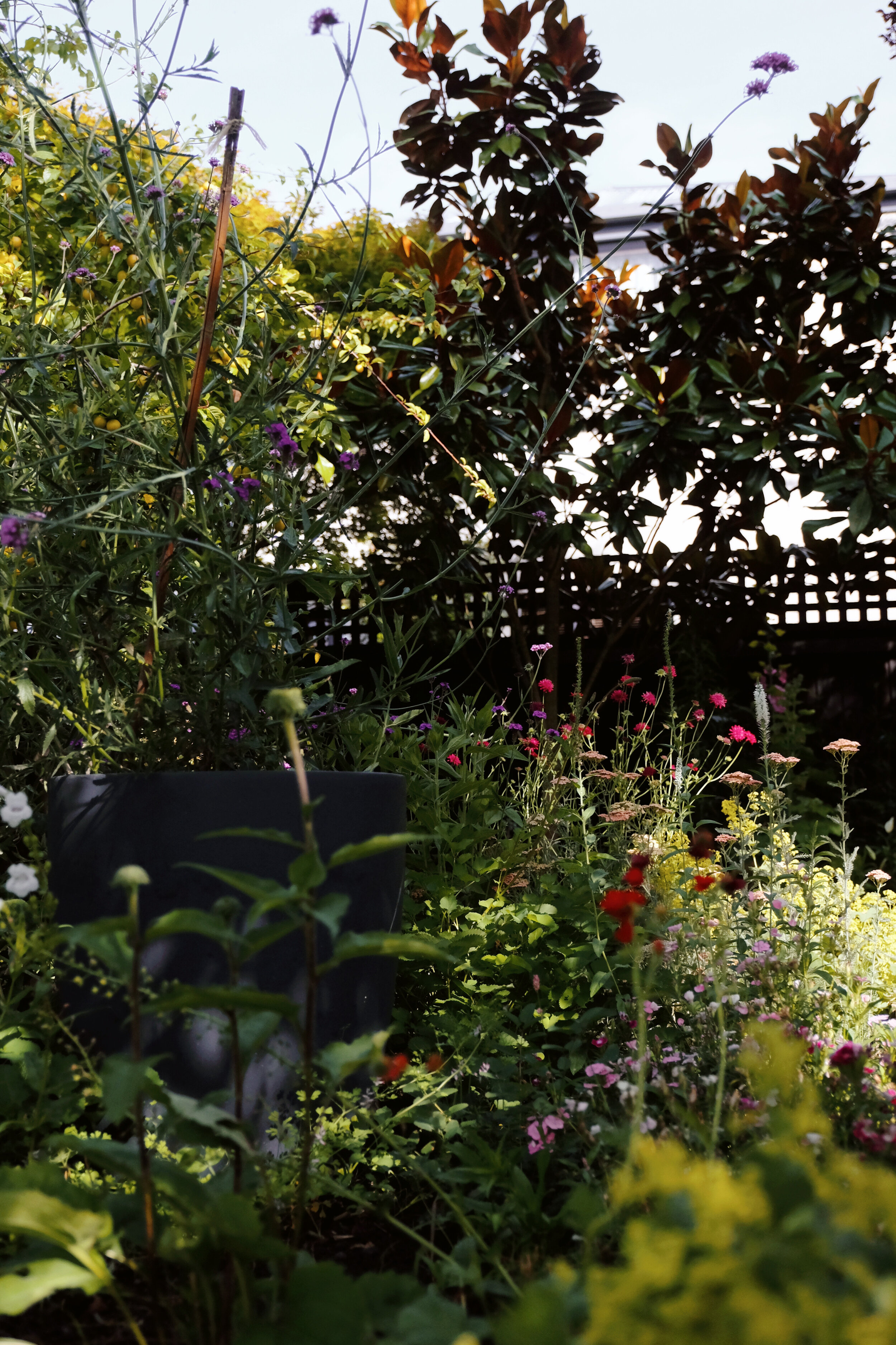Plant ideas for a naturalistic garden
/Stipa gigantea and Poa cita at home in the naturalistic beds at Flaxmere garden.
If I squint my eyes, I can almost see beyond the bare garden and frosty mornings for those first signs of spring and what will hopefully be the beginnings of my new garden beds. As previously covered, I am deeply inspired by the naturalistic style of planting, spurred on by the New Perennial Movement.
The creation of a rich, visual garden offering a gentle wave of change and interest as the season's progress and planted to suit my coastal Canterbury climate of cold winters and hot dry summers.
While I have a mountain of jobs to tend to first, including the removal of some trees, extension of irrigation and reclamation of lawn, I’ve been avoiding them by researching plant options.
A hallmark of the naturalistic style is the mixing of grasses with flowering perennials, planted tightly in drifts that mimic a wild landscape, albeit an imagined and curated one.
Already somewhat obsessed with interesting, airy perennials, I have started gathering together a list of options that I’ll ultimately select my combination from. I’m forcing myself to consider not only seasonal colour and layers but a variation of petal form and ultimately seed head structure.
I thought it might be helpful to share some of the plants I’m eyeing up to aid anyone else considering creating a garden of this type.
Grasses
Grasses provide the soft structure in a naturalistic garden, particularly heading into the winter months as flowering perennials become skeletal. Particular appeal for me when considering my site is the large Stipa gigantea ‘Golden Oates’ or more so, Miscanthus sinensis ‘Morning Light’ with its slender leaves and tall flowers maturing from rust to fans of fluffy cream.
I’m also tossing up the use of Calamagrostis x acutiflora ‘Karl Foerster’, a feathery reed grass with tall tan spikes that remind me a little of wheat.
Miscanthus sinensis ‘Morning Light’ - image supplied by Puriri Lane
Briza media ‘Limouzi’ - image supplied by Puriri Lane
In the mix too are varieties of Briza with its beautiful, delicate flowering stems that dangle little “heart shaped lockets” as so wonderfully described by Puriri Lane Nursery where I have been deep in research. In particular, Briza media ‘Limouzi’ has me entranced with its soft green foliage and slightly taller stature than others.
Some terrific New Zealand natives on my list are Poa cita, a densely tufted tussock and Carex buchananii with its lovely wispy, bronze leaves. The latter however doesn’t appreciate the end of winter cut back that all others would be subject to within the naturalistic planting.
Perhaps the most appealing for me is Chinochloa flavicans, the miniature toetoe with its recognisable feathery flowers.
Poa cita at Flaxmere garden.
Chinochloa flavicans - the miniature toetoe seen here in central Christchurch public planting.
Early season flowering
In the late winter of a naturalistic garden, the grasses and dry structural frames of perennials are cut right back to reveal a very low and calm moment in the bed.
As summer perennials begin to bolster their foliage once again, I have been identifying some early to late spring flowering options.
Bulbs are an obvious option in particular drifts of old-fashioned daffodils like ‘Pheasant’s Eye’ or even tulips. Delicate beardless irises would be beautiful too, particularly varieties of Iris siberica or the New Zealand native Libertia peregrinans.
For later, I have my eye on the fantastical blooms of Phlomis russeliana; commonly called Jerusalem sage with its bursts of yellow flowers that are spaced evenly up long rigid stems, supported by wonderful large and broad foliage.
These arrive in late spring and even as the petals drop, the architectural structure remains for as long as you allow it, offering terrific graphic interest when mixed in with other plants.
I’m also really attracted to the Ixia maculata ‘Elvira’ with its ethereal spikes of icy blue flowers and the possibility of mixing with alliums, which will come into their prime in summer.
Ixia maculata ‘Elvira’ at fabulous Welton House near Blenheim. Image taken while of guest at Garden Marlborough.
Phlomis russeliana; commonly called Jerusalem sage in my garden in Christchurch.
A little Siberian iris weaving through gaura in central Christchurch.
Summer into autumn
My summer and early autumn flowering perennial list is where things get out of control and showing restraint, in relation to the size of my space, is going to be a challenge.
Where I have previously tended to collect specimens one-by-one and plonked them into my garden, the abundant, tapestry effect I am after will work best when planting more or fewer plant types. Tricky!
Alongside my long-time favourite; the willowy Verbena bonariensis, I am attempting to narrow down varieties of plants I already love. Of the echinacea family, I hope to focus on the divine Echinacea pallida ‘Hula Dancer’ with its long and droopy pale pink petals while also pulling in the white Echinacea purpurea ‘Alba’.
Echinacea pallida ‘Hula Dancer’
Fave - Verbena bonariensis with garden view behind which is to be drastically altered!
Sanguisorba officinalis - commonly known as Greater Burnet.
After coveting plants of the Sanguisorba family, this last season finally saw me add Sanguisorba officinalis (Greater Burnet) to my mix, and I was not disappointed. Tall stems rise from a clump of attractive, saw-toothed foliage, producing tiny little rust coloured ‘bullets’ that float through their neighbours. Terrific for picking and for drying.
Eryngium planum ‘Sea Holly’ and Echinops ritro ‘Globe Thistle’ are both in the running with their silvery blue tones and fantastical prickly blooms. Well after their colour has faded, they present great graphic form in the tonal, winter garden-scape. And I simply can’t leave out long flowering, starry headed Astrantia major ‘Star Bush’ for its beauty in both the garden and the vase.
Echinops in central Christchurch public planting.
Sedum in central Christchurch public planting.
I’ve been very inspired by the use of pink and white guara in central Christchurch’s public planting.
Lastly, within this long wish list, I am extremely motivated to include both pink and white gaura. Inspired by its use in public planting throughout Christchurch central city, I have noted that the plants have flowered for months. Coming into their own in early summer and still waving their little butterfly blooms through to early winter.
There are certainly other plants dancing around the edges of my list including my favourite lower-lying, long flowering Knautia macedonica ‘Red Cherries’ and late-season beauty; Sedum spectabile ‘Autumn Joy’.
I have been deep in investigation of penstemons, persicarias, veronicastrums, heleniums and salvias to continue filling in the seasonal gaps, however, physical space is certainly my challenge!
I look forward to sharing the progress of this project once the hard digging is done!
The little bright, magenta nodding heads weaving through my garden
This article was first featured in my Stuff ‘Homed’ gardening column for beginners and The Press on July 22nd 2021
All words and images are my own unless otherwise credited and taken in my home and garden in Christchurch, New Zealand.

















